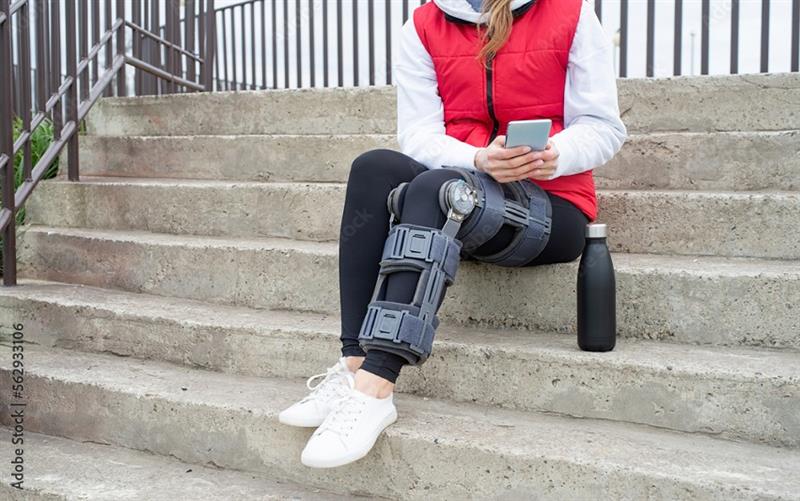
Understanding Orthotic Wear
Orthotic wear refers to the use of specialized devices designed to support, align, or correct musculoskeletal issues. These devices come in various forms, such as braces, supports, and custom-made inserts for shoes. Orthotics are prescribed by healthcare professionals to alleviate pain, improve mobility, and prevent further injury in individuals with conditions like arthritis, plantar fasciitis, or scoliosis.
Importance of Patient Adherence
Patient adherence is the key to the success of orthotic treatment. It involves the patient's commitment to wearing the prescribed orthotic device as recommended by their healthcare provider. Adherence ensures that the orthotic works effectively, providing the intended benefits.
Types of Orthotic Devices
1. Braces and Supports
Braces and supports are commonly used to stabilize joints, reduce pain, and enhance mobility. They are often employed for conditions like knee injuries, carpal tunnel syndrome, and spinal issues.
2. Foot Orthotics
Foot orthotics, also known as shoe inserts or insoles, are designed to address problems related to the feet. They can provide arch support, cushioning, and stability for conditions like flat feet or plantar fasciitis.
3. Custom-Made Orthotics
Custom-made orthotics are precisely tailored to an individual's unique anatomical needs. They offer the highest level of comfort and support and are typically recommended for complex foot and gait issues.
4. Ankle Braces and Supports
Ankle orthotics are used to provide stability and support to the ankle joint. They are often used for conditions like ankle sprains, Achilles tendonitis, and chronic ankle instability.
5. Wrist Splints
Wrist orthotics or splints are designed to immobilize and support the wrist joint. They are used for conditions like carpal tunnel syndrome, wrist sprains, and repetitive strain injuries.
6. AFOs (Ankle-Foot Orthoses)
AFOs are custom-made or prefabricated devices that extend from the calf to the foot. They are often used to address issues related to foot drop, cerebral palsy, or other conditions affecting gait and mobility.
Benefits of Orthotic Wear
1. Pain Relief
Orthotic devices are renowned for their ability to alleviate pain. Whether it's reducing knee discomfort, easing lower back pain, or relieving foot soreness, orthotics can significantly improve one's quality of life.
2. Improved Mobility
Many individuals find that orthotic wear enhances their mobility and stability. This can be particularly important for those recovering from injuries or living with conditions that affect their gait.
3. Preventing Further Injury
Orthotics not only help with current discomfort but can also prevent the worsening of musculoskeletal issues. They offer vital support and alignment, reducing the risk of further injury.
4. Customization:
Orthotic devices can be customized to fit an individual's unique anatomical needs. This ensures a comfortable and tailored solution that addresses specific concerns.
5. Enhanced Sports Performance:
Athletes often use orthotic devices to improve their performance by providing better support and reducing the risk of sports-related injuries.
6. Correction of Gait Abnormalities:
Orthotics can correct gait abnormalities and irregular walking patterns, improving overall posture and balance.
7. Long-Term Relief:
When used as prescribed and maintained properly, orthotics can provide long-term relief from chronic pain and discomfort, allowing individuals to lead more active and pain-free lives.
8. Posture Improvement:
Orthotic devices can help individuals maintain proper posture, reducing the strain on muscles and joints, which can, in turn, alleviate pain and discomfort.
9. Customized Pain Management:
Healthcare providers can tailor orthotics to manage specific conditions, such as plantar fasciitis, arthritis, scoliosis, or diabetic foot issues, providing effective pain management.
10. Better Quality of Life:
For many people, orthotics can significantly improve their quality of life by allowing them to perform daily activities with greater ease and comfort.
Challenges in Patient Adherence
1. Discomfort and Adjustment Period
Patients often face initial discomfort when wearing orthotics. This adjustment period can be challenging, but it's crucial to persevere for long-term benefits.
2. Aesthetics and Self-esteem
Some individuals may feel self-conscious about the appearance of orthotic devices. Addressing these concerns can be vital for improving adherence.
3. Financial Constraints
Cost can be a barrier to adherence, especially for custom-made orthotics. Exploring insurance options or discussing affordable alternatives with healthcare providers is essential.
Strategies for Enhancing Patient Adherence
1. Education and Communication
Healthcare providers should educate patients about the benefits of orthotic wear and the expected outcomes. Open communication channels can address concerns and encourage adherence.
2. Customization and Comfort
Customization ensures that orthotic devices are tailored to the individual's needs and comfort preferences. This minimizes discomfort and encourages regular use.
3. Emotional Support
Providing emotional support and encouragement can go a long way in helping patients adapt to orthotic wear. Empathy and understanding are essential.
Choosing the Right Orthotic Device
1. Consultation with Healthcare Provider
Consultation with a qualified healthcare provider is the first step in selecting the right orthotic device. They can assess your condition and recommend the most suitable option.
2. Customization Options
Discuss customization options with your provider, especially if you have specific comfort requirements or unique foot anatomy.
3. Budget Considerations
If cost is a concern, inquire about affordable orthotic solutions or explore insurance coverage options to make orthotic wear accessible.
Getting Started with Orthotic Wear
1. Proper Fitting and Sizing
Ensure that your orthotic device is properly fitted and sized to maximize its effectiveness. Ill-fitting orthotics can lead to discomfort and reduced adherence.
2. Gradual Introduction
Ease into orthotic wear gradually to allow your body to adapt. Start with shorter periods and gradually increase wear time as your comfort level improves.
3. Maintenance and Care
Regularly clean and maintain your orthotic devices to extend their lifespan and ensure they continue to provide the necessary support.